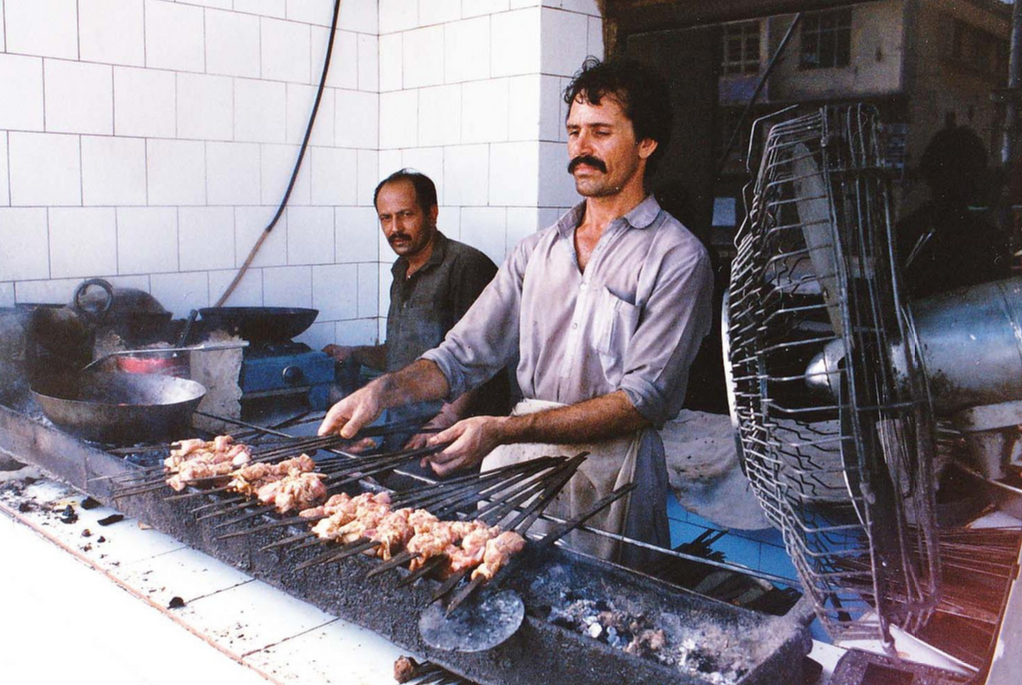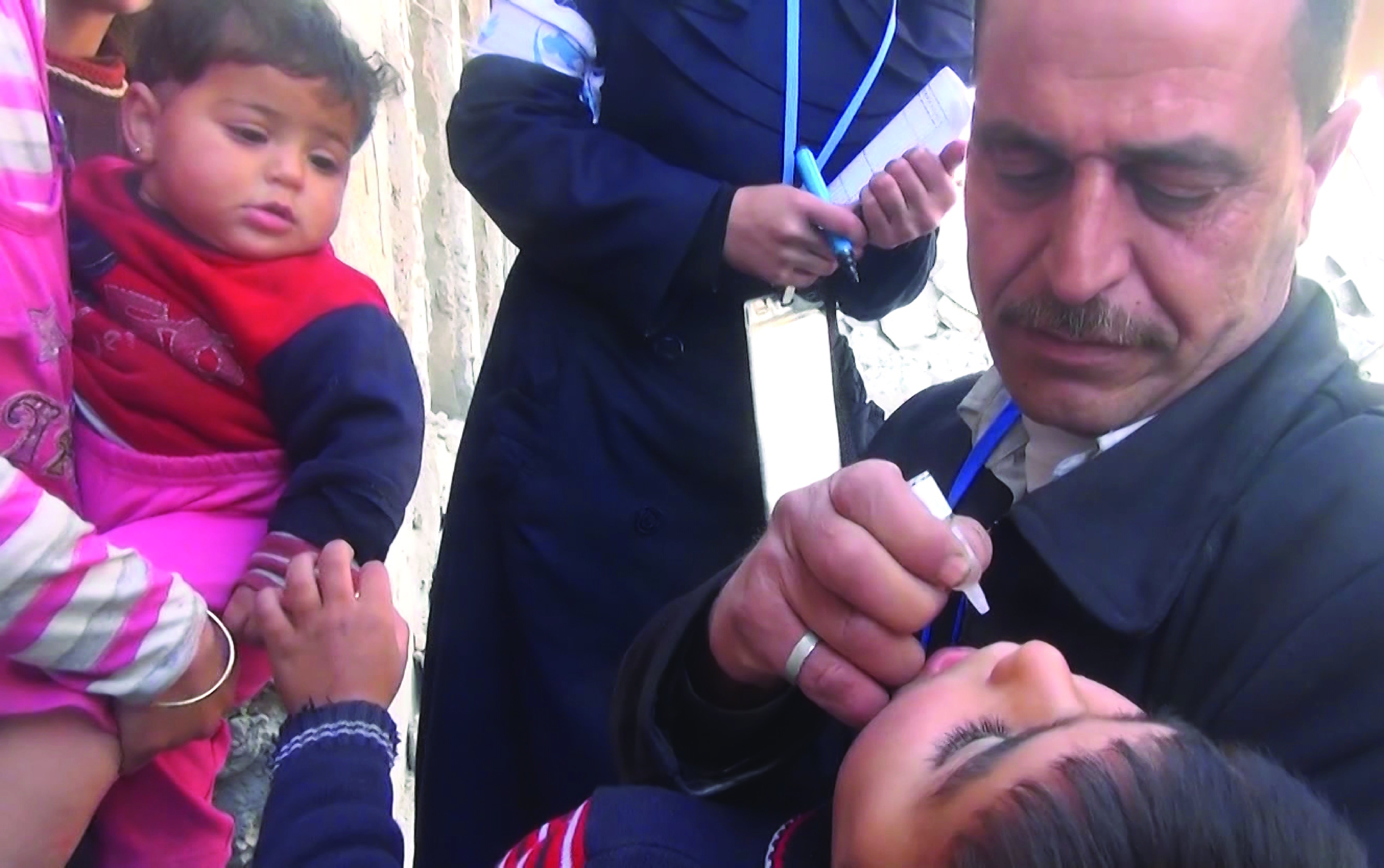
I'd spent the day in Peshawar, hearing stories of how the Taliban were hunting down vaccination workers—women, for the most part. To me, it seemed a medieval twist of logic: The Taliban were gunning down the same polio vaccinators who were trying to save the Taliban's kids from being stricken by polio. For the Taliban to hold their own children hostage to a crippling disease seemed a particularly idiotic way of hitting back at America.
It was Ramadan, the month of fasting, and my driver Khaled was famished. At dusk, we raced back to Islamabad, breezing through all the checkpoints, where cops were too intent on preparing their Iftar feast of dates and samosas to bother seeing if we, or any of the other drivers on the highway, were carrying bombs into the Pakistani capital.
Driver Khaled and I stopped at a favorite kebab restaurant of mine in Islamabad. The fasting was over, and the restaurant was full of hungry Pakistani families chomping down, as waiters rushed by with platters of skewered lamb kebabs. We sat in a corner, next to a large round table crowded with adults and kids. The oldest man at the table looked oddly familiar to me, someone I might have interviewed years before.
"Khaled, is that who I think it is?"
He didn't dare say the man's name aloud, but he gave a quick nod.
It was Dr. A. Q. Khan, the infamous Pakistani physicist who ran his own nuclear arms bazaar.
You wonder how Iran and North Korea got the technology for nukes? Dr. Khan.
Back in the 1990s, before Dr. Khan's wheeling and dealing with centrifuges was known beyond the circles of Western intelligence agencies, I interviewed him for Time magazine. It wasn't a great interview. He was, by turns, cagey and bombastic. But I was struck by a large painting he had of a scene from India's agonizing partition with Pakistan in 1947. It showed a train arriving in Lahore station under a red and violent sky, its wagons filled with slaughtered Muslims families. The gist of my interview, I recall, was that Dr. Khan, like many Pakistanis in uniform, believed Pakistan needed a nuclear weapon to protect itself against India, its much larger and more powerful neighbor. Back then, Dr. Khan was riding high. He was a national hero, bigger than cricket stars, and every provincial capital had, in a center plaza, a scale model of the Chagi Hills, the desert range in Baluchistan where Khan's team of bomb-makers had carried out a series of successful, underground nuclear tests.
The next time I wrote about Khan was in 2004, when he fell into disgrace. The CIA and other agencies fingered him as being responsible for selling nuclear technology to Iran and North Korea. The U.S. wanted him extradited, or at least to face an international court. But you don't do that, from one day to the next, to the man who was once your nation's proudest hero. The Pakistanis put him under house arrest. I cruised by his house and saw that in his garden there was a bougainvillea bush sculpted into an exploding A-bomb cloud.
And now here Dr. Khan was at the table next to me, with a swarm of grandchildren. No longer under house arrest.
Why didn't I approach him? I had just come from Peshawar, where as the only American wandering in the bazaars, I had felt suspicion and hostility to a degree that I had rarely encountered before in Pakistan. There was an undercurrent of that same hostility in the kebab restaurant, and across all Pakistan. Undoubtedly Dr. Khan had his secret police minders, feasting on kebabs at a nearby table, and my approach would have caused a scene. And there was something else: after having spent the day in Peshawar listening to stories about polio workers being attacked and about how religion had subverted science, I wasn't in the mood to engage in conversation with the man who calls himself the Father of the Islamic Bomb.
Tim McGirk, the former Time magazine Bureau Chief for South Asia, is now a lecturer and Managing Editor of the Investigative Reporting Program (IRP) at U.C. Berkeley's Graduate School of journalism. He covered the Pakistani side of the polio series which appeared on National Geographic's website and coordinated the IRP's reporting team.







